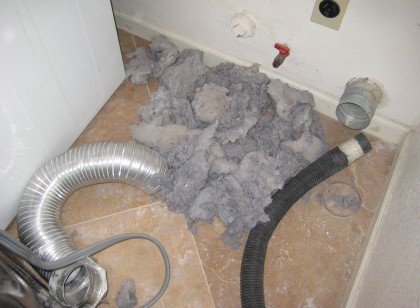
Cleaning the dryer vent is often the last thing we would think about when it comes to housework. Most of the times, it is often left forgotten. But did you know that the dryer is the number one fire hazard in the house? The source of fires often come through the dryer venting and lint trap. Thus, it’s important to know how to maintain your dryer vent and prevent fires from breaking out. Thus, we have compiled some useful things to know about cleaning your dryer vent.
It is always good to make it a perpetual habit to clean the lint which is often located behind the dryer. This requires cleaning of the dryer chassis’ interior and can be tedious sometimes. Thus, you should get someone qualified to do this job once every few years.
Dryer vents can be prone to outbreaks of fire if not maintained properly. However, there are some measures which you can take to reduce the risk of fire breaking out in your dryer vent. Firstly, you have to always check that the exhaust air is escaping when the dryer is operating. This is because it if it is not escaping, it means it is blocked and you need to remove the blockage. Furthermore, a blockage being accumulated overtime can cause dryer fires and you would want to take precaution against it.
VOC’s (volatile organic compound) such as cooking oils, finishing oils, stains, cleaning agents and gasolines can be highly flammable and you want to make sure to be careful when handling them on laundering clothes. Always wash the clothing thoroughly more than once to reduce the amount of chemicals on the clothes and hang them out to dry if possible. Take note to use the lowest drying cycle and heat setting if you are using a dryer so that it can cool-down faster at the end. Be very, very careful not to leave your clothes piled in a laundry basket or in the dryer as this can ignite fire.
Plastic may not be the suitable choice for dryer user and sometimes even metal foil ducts are not suited for the dryer as well. You should replace them with either corrugated semi-rigid metal duct meeting UL 2158A or a rigid duct. This will enable more air flow and also lower the risk of any discharge from the dryer air as well.
When lint starts to build up in your dryer vent, it’s a warning sign to clean it up. You can tell when it needs cleaning when clothes start to take a longer time to dry or when the outside of the dryer starts to heat up. You might want take when especially if there is a burnt smell lingering in the room. It’s better to play safe than sorry where cleaning the vent will prevent the lint from catching on fire.